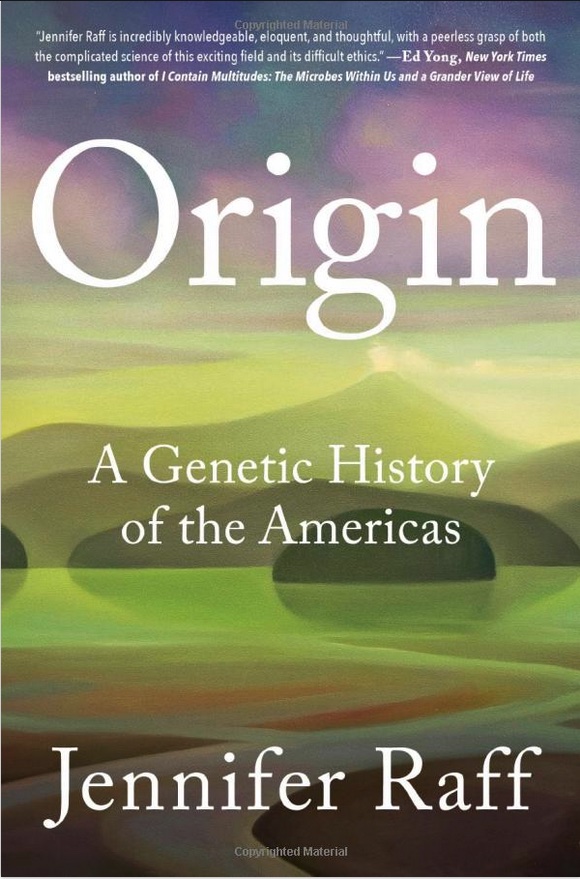Origin: A Genetic History of the Americas
Review by Judy Helfand

The story I absorbed about how Indigenous people came to the Americas told of an overland migration at the Bering Straights after the last glacial period, around 13,000 years ago, where people migrated into what is now Alaska and then gradually moved south, populating North, Central, and South America as they went. Not much evidence existed to support this theory and many Indigenous people have origin stories that contradicted these assumptions. In Origin: A Genetic History of the Americas, Jennifer Raff lays out archeological evidence that complicates the old story. In particular, she describes sites where evidence of human activity dates back before 13 thousand years ago. She also presents findings from paleogenetic research, using ancient DNA to explore human movement over time.
I picked up Origin because I have heard of old sites with human habitation being found in South America and also of places in the US where there is evidence of cultures existing earlier than 13 thousand years ago. I wondered, did people sail to South America from across the Pacific? Did humans evolve here separately from evolution in Africa? What is the story? I also have an interest in the use—and misuse—of DNA, especially as folks use DNA tests to explore ancestry. Origin answered those questions and also discussed many issues in archeological research and genetic research I hadn’t considered. Ethics is a major theme. Scientists in the past (and also presently) have exploited, lied to, or discounted Indigenous communities when studying ancient human remains from the Americas. Raff provides several examples of past mistakes and also details examples of researchers attempting to work with Indigenous communities and respect the human ancestors that are the basis of their research. She is clear that cultural beliefs that prohibit research on human remains must be honored and seen as valid, not dismissed as “anti-science.”
For those interested in how DNA is used to determine migrations and timelines, Raff provides many details. She also describes more traditional techniques used in archeology. And I appreciated her laying out multiple and often contradictory theories to explain archeological findings or confusing results from scientific tests. Plus throughout the book Raff provides history and cultural assumptions from specific times so as to place theories within a context of contemporaneous beliefs and knowledge.
For those who want the “ending,” the model Raff thinks fits best with the archaeological and genetic data for the peopling of the Americas suggests that people entered sometime between 30,000 and 14,000 years ago over a land bridge. People then traveled down the west coast via boat, reaching South America fairly quickly. Research continues to fill in and complicate the story of migrations and Raff ends by saying that her own work will almost certainly be out-of-date before long.
Origin: Genetic History of the Americas, Jennifer Raff. (Hachette Book Group, 2022)

Leave a Reply